When buying or renting a house in Norway, you may come across a heat pump. Read about what they are and how they work.
Ask any Norwegian how to reduce your energy bills and heat pumps are likely to come up as a topic. These machines are famously efficient at converting electricity into heat for your home, but they are bizarrely unpopular in the US and Canada and almost non-existent in the UK.
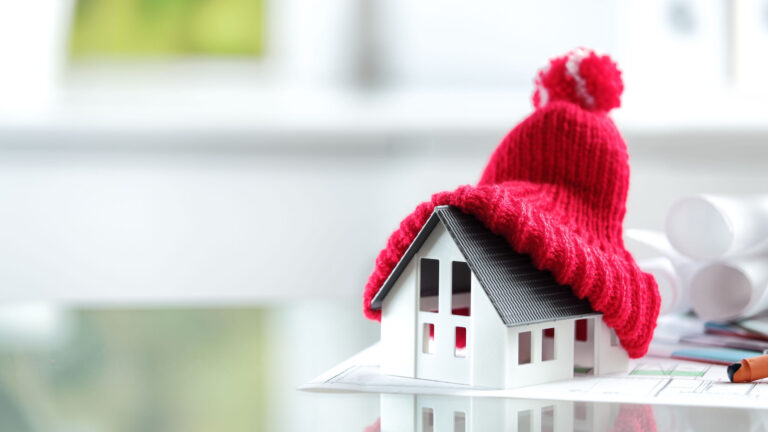
With energy prices skyrocketing, maybe it’s time to take another look at heat pumps and how they can help households make ends meet. And what better place to look than Norway, where half of households have heat pumps installed?
How heat pumps work
Heat pumps work by extracting heat from the outside air and releasing it into your home. They do this by circulating a refrigerant from the outside to the inside, with the help of a compressor.
Outside the house, the liquid changes states from liquid to gas, absorbing heat in the process. The gas then travels to the inside of the house, and changes back to liquid form, releasing its heat.
It may seem counterintuitive to think that you can heat your home by bringing in heat from the frigid outdoors, but that’s exactly what’s happening when you use a heat pump. Even at freezing temperatures, there is still enough heat in the air that can be grabbed by a heat pump and transferred into your house.
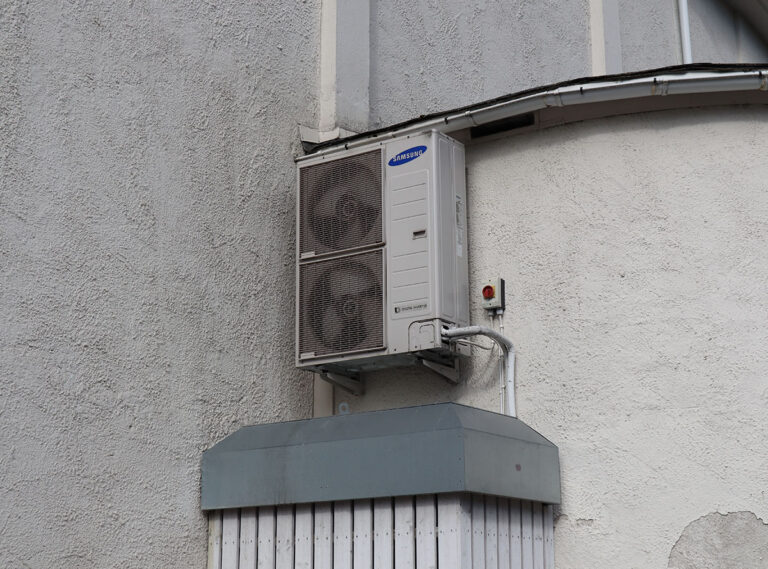
Heat pumps work on the exact same principle as refrigerators and air conditioning systems. In fact, the exact same heat pumps used to warm up houses in Norway are marketed as air conditioners in warm countries.
Why heat pumps are efficient
Technically, electric heaters are 100% efficient: they convert all of the electrical energy to heat. But this figure tells a misleading story.
Because heat pumps are not heating up air but just moving heat around, they use less electricity to get your home to the same temperature. The reduction is of about 50% to 80%, depending on the type of heat pump and the outside temperature.
The different types of heat pumps
Broadly speaking, there are three types of heat pumps: air source, water source and ground source. Air source heat pumps extract heat from the ambient air outside.
Water source heat pumps extract the heat from a body of water or underground aquifer. This is even more efficient than extracting heat from the air, but is more expensive to install and has the obvious drawback of requiring you to have a body of water close to your home.
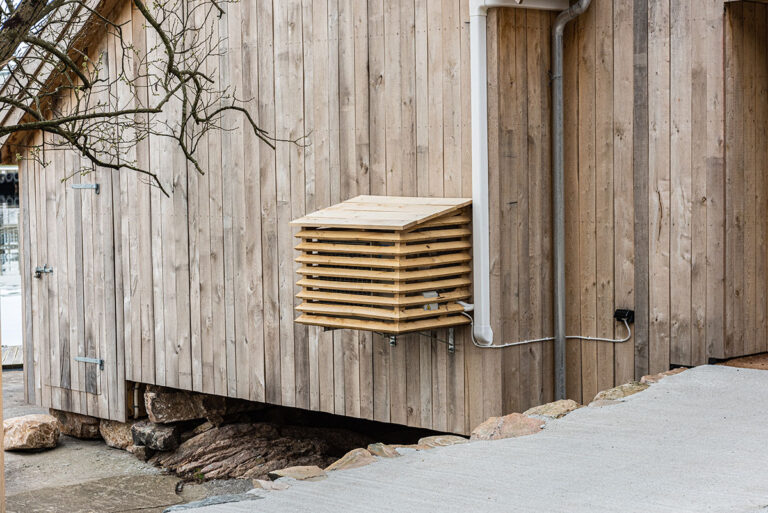
Ground source heat pumps extract heat from several metres underground, where the temperature is constant. Again, this is much more efficient than extracting heat from the air, but the drawback is that it requires a costly excavation to install the underground pipes – and that it requires you to have a garden to excavate.
The heat pumps we are talking about in this article, that are so massively popular in Norway, are air source heat pumps: cheaper to install and still much more efficient than traditional electric heating.
Heat pumps in Norway
The first time a heat pump was installed in Norway was in 1978. The technology remained quite rare in the country until the 00s, when it exploded in popularity.
Read more: District Heating in Norway
Part of the reason for this increase in popularity is that the technology reached a new level of maturity. Another factor is that electricity prices spiked in the winter of 2003.
The price hike was temporary, but it was enough to make consumers nervous, and to get them to look for ways of saving energy. In addition, the price increase led the government to create a cash-back programme for homeowners installing heat pumps.
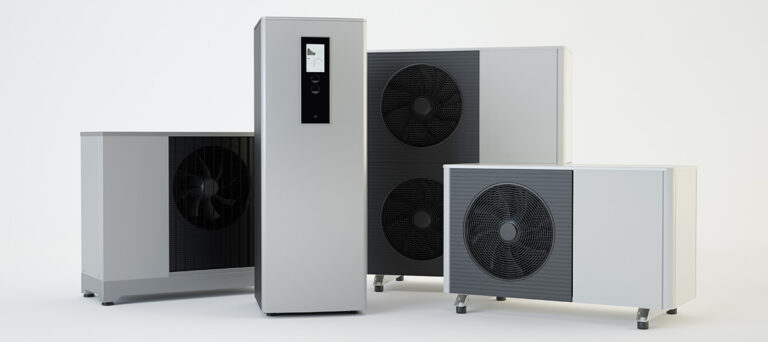
All these factors combined led to an abrupt rise in popularity of heat pumps. Today, about half of Norwegian households have heat pumps installed, resulting in total energy savings of 10 TWh. That’s enough energy to make 368 trips to the moon.
Heat pumps in the US
Heat pumps are relatively prevalent in the Southern states, where they are used both for heating in the winter and for cooling in the summer. In the North, they still suffer from a reputation for being inefficient at cold temperatures.
This reputation is due to the fact that two decades ago, the energy savings brought by a heat pump did not weigh up against installation costs in very cold climates (say temperatures at or below -15°C/5°F).
Nowadays, that reputation is undeserved. Heat pumps have become more efficient and still beat traditional electric heaters at temperatures as low as -30°C/-22°F.
The Inflation Reduction Act should help boost the adoption of heat pumps in the United States. It offers homeowners tax credits for installing them, including especially generous incentives for low-income households.
Heat pumps in Canada
Canada is behind Norway in terms of the rate of adoption of heat pumps for heating. This is in large part due to the perception, described above, that heat pumps do not work well in very cold climates.
The situation is changing though, as Canadians are becoming aware of the large savings heat pumps make possible, even in very cold temperatures. Like in the US, incentive programmes are encouraging consumers to switch to heat pumps.
The Canadian government recently launched the Oil to Heat Pump Affordability Grant, which will provide households subsidies of up to 5000 CAD to cover the costs of switching from oil furnaces to heat pumps.
Heat pumps in the UK
The UK is at the bottom of the list in Europe when looking at the rate of installation of new heat pumps.
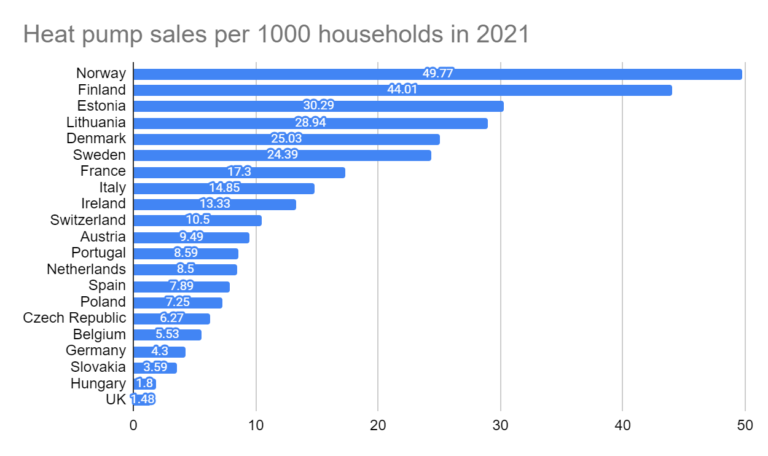
This is due to several reasons, including a history of (relatively) low gas prices in the country.
Another hurdle is that many households have central heating with boilers. These systems can be retrofitted with heat pumps, but the installation costs are quite high.
The UK has adopted strict climate targets though, and one of the low-hanging fruits to reduce emissions is a massive switch towards heat pumps.
Given the current energy crisis in the country, expect more incentive programmes in the coming years to encourage a switch towards more efficient systems powered by heat pumps.
Let us know what you think
Do you have a heat pump installed in your home? Have you considered installing one? Let us know in the comments!


I live in the countryside in the UK and currently have an oil fired boiler for central heating and hot water. My boiler is nearly 25 years old and is showing its age. I could replace it with another oil boiler which would cost around £2,500 with installation. A comparable heat pump would cost £13,000, less a government grant of £5,000, leaving me with an additional cost of £5,500 over the cost of an oil boiler. At current oil and electricity prices, and assuming they stay at around 35p a kWh for electricity and 8p a kWh for oil, assuming a COP of 3 and 80% boiler efficiency, there is no long term financial incentive to convert to a heat pump. It will be a decision based on other factors!
I don’t know where you got those prices. We installed a heat pump which cost £1200 and the electrics and plumbing were done in a few hours by our usual artisans. It’s nothing complex.
Of course it’s all relative to the building square meterage , but we have been quoted £34,000GBP for 486 square metres . That I believe incudes the ugly panel radiators , tank etc , it’s a complete refurb so should be easier , financially in terms of a saving it’s a non starter .
However my concern though is will it do the job ?
We (UK) had one installed a couple of years ago, coming from bulk LPG, along with solar / domestic battery / EV. Luckily, good call all round. Boris’ poster boy ( oh dear!) Wouldn’t ever go back on any part of it.
Had the heating & hot water on to our content during November, fully fuelled car.
Charge domestic battery and car during cheap rate (00:30-04:30).
Kwh rate averaged out at 17.5p from 7.5p cheap rate, 40p peak rate. Bill for November – £94.
Govt. has given us £600 towards winter bills, getting £100 from Octopus for taking part in ashp test project. – We will actually come out of winter in credit!!
What’s not to love??
Massively impressed with both domestic and EV tech and access to cheap rate electricity.
If you’re considering it and can in anyway afford it, do it.
Ultimately it is very low maintenance, very effective, will pay tor itself and save the planet!!
Be great, be like a Norwegian 😁👍
I am wondering how you charge from solar if your work
Your experience is far apart from ours. We have a new build which has a heat pump it’s the most expensive thing to use! Our electricity costs 32p/kwh. Currently our system does not switch off to protect the pipes so is constantly running at 23p and when it’s actually heating our 2 bed flat it’s using 76p! How is this affordable? We use an oven for 40 minutes and a TV for 3hrs and our bill is around £6/7 per day while it’s cold. Next time we move gas all the way!
Have had heat pump for over a year, very efficient and money saving. Well under energy price cap. For bedroom house. Cavity wall insulation, solar panels. Double glazing, roof insulation.
You have not mentioned Australia. Air heat pumps in Australia work very well. Cold air temps here very rarely get below 0 C , so heat mode is a no brainer. Of course its when it gets hot that they are great. Hopefully temps will not go above 50 deg C. The unit installed is a mini split system with an inverter dc compressor.
Rubbish about temps in Australia not often going below zero F. Most of southern half of Australia will go below zero F at times in winter, right up to Alice Springs in the Centre. And especially along the Great Dividing Range and the associated Tablelands. We have a reverse cycle aircon in Bathurst, NSW, 650 metres above MSL, and it is not much use below 4 degrees as it freezes the outside unit and then spends 15 mins defrosting, although it is about 20 years old. Green as we are, we still have to use our ducted gas system when the outside temp drops below 4 degrees. Yes, the house has insulation in the walls and roof, and sarking below the tiles.
A year ago had heat pump and all new radiators installed November 21. We were frozen from moment installed and we’re using £140/week in electricity. Installers said it was not possible to heat our house (186 Sq M bungalow 1694 to 1986) they pulled out heat pump after 3.5 months installed new tiny oil boiler and gave us £13900 refund. We still left with electricity bill £1500. I’ll never ever heat anything with electricity and I’ll never have a heat pump. This was worst thing ever. Enormous noisy primitive Ghastly Daikin.
Well, Norwegians love them and the savings they generate 😇 But the type you describe, with radiators, is almost unheard of here. The common thing to have is air/air.
As I have been to Norway and never seen a heat pump I wonder how you love them
You can’t have looked very hard if you haven’t seen one. They’re everywhere.
Hi Daniel, That is what I wanted to know when I started searching. We have a gas system, radiators on 15mm pipes. But when we lived in Cyprus we had inverter Aircon units, they worked well in the winter, but never really hits freezing on the coastal plain.
From what you just said you have the split systems, like aircon and no radiators?
Many Thanks
Lived in Florida where we had one, very expensive to run average bill in 2004 was $300 per month and very noisy, so don’t understand how they claim they are cheap to run.
We’ve had one installed in our 1989 built house since early summer. Triple glazing fitted in just 2 hours in August. Constant hot water and house warm day and night. Low bills so far. They are supposed to be 400% efficient but in November ours was 600%! We also have solar which gives only 1kw at this time of the year so almost no saving on bills and battery which gets filled over night which cheap rate electricity with Octopus. One electric car also charged using home charged electricity. We put extra insulation in loft a few days ago. Toasty.
About a year ago I moved to a small 1950s house near Leeds, UK, and since the Government was just about to offer grants I decided to replace the combi boiler with a heat pump. I was concerned about it being inefficient if set to a high output temperature so I arranged for it to provide central heating only, and fitted solar panels on the roof to send power to a Sunamp heat battery that supplies hot water on demand. Some radiators had to be changed for more efficient models, but all pipework remains the same. The system is enhanced by an automated system of smart radiator valves and thermometers which only heats rooms that are in use. Finally, by fitting an induction hob in the kitchen I was able to completely dispense with gas. At current prices I should see a total annual fuel bill of around £2000, and I always have warmth when and where I need it.
We have had solar assisted heat pump installed. Only a few hours of sunshine per day is enough to heat hot water without heat pump starting.
We still have wood fired kitchen stove. I’m installing pipe insulation on radiators to eliminate loss.
The key factor about Norwegian homes is insulation. Even the 400yr old farm house I stayed at during winter time has insulation a foot thick and of course made from wood.
But they even closed up part of rhe house during winter. Turned off the freezer and used those rooms instead. They were sub zero but the doors and internal walls all insulated too.
It also helps that historically compared to wages electricity is super cheap.
They is often no chance of even being allowed by planning in the UK to insulate our houses to same level and sadly after grenfeld the UK building industry is terrified of wooden buildings. With incumbent builders owning all the land to build shoeboxs at max profit minimum spec.
Norwegians out of the cities typically self build.
Until we have cheap electric or COP hits a yearly average of 6, gas is the way to go.
Hi
We live in North Devon, UK.
We ought a 1980’S bungalow which had electric panel radiators that were v expensive to use. There is no mains gas. I had quotes for a full central heating system powered by oil or an air source heat pump. The quotes were all around £14500. We opted for the Mitsubishi ecodan ashp including a compatible hot water cylinder and a smart thermostat and 8 high output radiators.
I now have a warm bungalow with loads of hot water. And I get nearly £180 per quarter payment for 7 years from the RHI scheme. Not sure if the new scheme is as good.
Choose an MCS accredited installer for peace of mind.
For some reason there’s a lot of negativity in the tabloids about these systems.
I just installed a 12,000 btu/h heat pump at my cottage in Quebec, Canada. It supplements electric baseboard heating. It was simple enough to install that I was able to do it myself. Even at -30C it provides a 30% savings over electric heating. And down to -5C the baseboard electric heating is not required at all and the heating cost is less than half. The total capital cost was under $2000 CAD.
I will shortly have a heat pump – gas furnace hybrid system installed at my home which has forced air heating. With a $5000 CAD government rebate my out of pocket cost will be under $7000 CAD.
And hey, the bonus is free air conditioning when the weather turns hot.
I have an air source heat pump in new house installed by builder. Seems to work well although I’m not entirely convinced that it is cheaper than other forms of heating. I’m astounded by the UK government insisting on heat pumps from 2025 but not insisting on new builds that PV should be here installed. It’s an absolute must so far as I’m concerned – heat pumps only do heat and water – electric kettles, fridges, TV etc etc are not covered
Living in Saskatchewan Canada. Installed an air source heatpump a couple months ago. Got it off Amazon for $1300 CAD. Totally impressed. Coldest night so far was minus 25° C and it worked great. Tonight should tell more, supposed to hit -31°c. I got it to supplement my propane heat, but it works so well, the propane is supplementing it. If it wasn’t for the fact my basement starts getting real cold, I wouldn’t use propane at all. But I fire up the propane for an hour a day just to keep the basement from getting too cold. Last winter the propane heat would run most of the day. Not sure how much more electricity I’m using. I have solar panels, so not really a worry. My propane savings will probably pay for the heat pump within two winters.
Meanwhile, while governments are imposing deadlines and restrictions on new construction, on what type of heat source will be ACCEPTABLE, political leaders fly their jets all over the world and drive their gas guzzling SUVs all over the country they’re in. Once you change your central heating from Oil to a heat pump, you are locked into the Electric company. If you have solar panels, that’s great. If you don’t, you are tied into a utility that, at least in the USA, has a Monopoly and can increase YOUR RATES with a snap of their greedy little fingers. Even the Gas Company is a monopoly. Oil Heat still remains the best way to heat a home with a higher BTU output than natural gas or Electric. I live in the Northeast of the USA. Winters get cold here. I’ll stick with my Oil Heat. I updated my system this year with a High Efficiency Oil boiler that only runs a couple of hours a day to heat our 2000sq. ft. home.
We also have a Choice when it comes to Fuel Oil Dealers in our area. No monopoly, if you don’t like your company’s price or service, you can change to another company.
Try doing that when your house is completely dependent on the Electrical Company.
I don’t know where you got those prices. We installed a heat pump which cost £1200 and the electrics and plumbing were done in a few hours by our usual artisans. It’s nothing complex.
Any thoughts on the costs/efficiencies for the UK in 2022?
We have a Victorian house with a relatively modern extension at the back (2001 ish). Quotes for installation are coming in at just in at just under £7,000, but our calculations make running costs similar to gas. We have also been told we would need to block up our two Victorian fireplaces.
Such mixed reviews depending on who you speak to. Grateful for any thoughts.
Our experience with a 1970s Air/Air heat pump in Texas was that it worked fine for cooling the house, but the outside condenser froze up as a block of ice when the OAT was below 40 F. In 2011 we built a 3300 sqft (300 sq me) well insulated house with a 5 ton ground source heat pump. The electric power required was about 60% of a conventional AC, and in the winter, it extracted heat from the ground that was put there in the summer. The ground source was 300 foot boreholes with polyethylene 2 inch pipes, in a bank of five, 25 feet apart. In Norway, drilling such ground source wells would be difficult because of the underlying granite.
Sounds great but I was told you needed perfect insulation for it to work
I had an air to water Heat Pump installed February 2022 there were installation problems and insulation problems on the pipework. The company went into liquidation within 3 months then filed for bankruptcy within a year. I had an insurance backed guarantee (who knew nothing about engineering or heat pumps). At the third attempt they got someone to review and correct the work, this was done this summer, I did not use my central heating for a few weeks then when I switched it on it did not work. I am told that their is a blockage (on the pipework) for 3 weeks the Insurance company and contractor have been investigating and my heating comes from a “Fan heater”
This article’s somewhat misleading. Sweden has invested considerably more in efficient ground-source heat pumps than Norway. Most heat pumps installed in Norway in recent years have been cheaper, less efficient air-source heat pumps, typically used in reverse mode, as air-con units during hot periods during the summer. So Norway’s brag here is – yet again – cheap misinformation. Log burners are much more commonly used in Norway, which is why the air quality in Norway during the winter months is so poor.
How many air to air heat pumps compared to how many ground to air (geothermal), which brands of pump are commonly used in Norway… Thanks!!